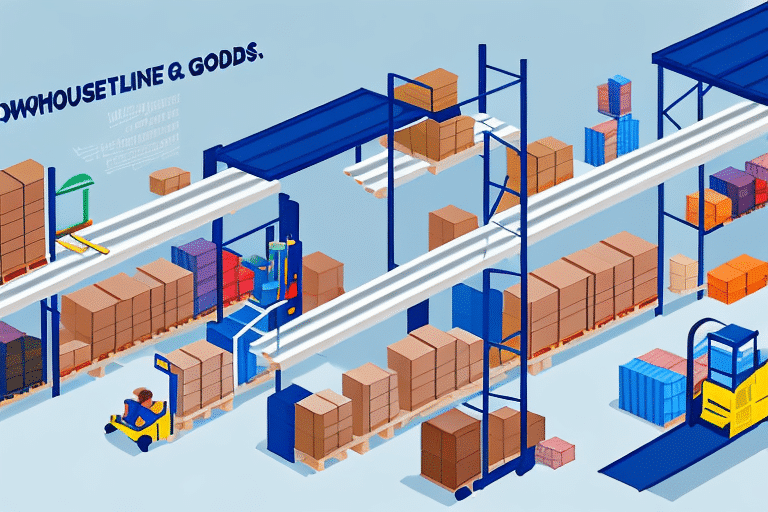The Benefits of Implementing a Warehouse Bin Storage System
A warehouse bin storage system is a critical component of a well-organized and efficient warehouse. Effectively implementing a bin storage system can significantly increase productivity, save time, and reduce costs. This system allows for organized, efficient storage of inventory, making picking and replenishing faster and more accurate. According to a Warehouse IQ report, optimizing bin storage can increase warehouse efficiency by up to 30%.
Additionally, a bin storage system maximizes storage space, reduces labor costs, and minimizes the risk of errors. An organized warehouse creates a safer working environment for employees and makes it easier to rotate inventory, reducing the risk of spoilage. Better inventory control is another major benefit, allowing for real-time tracking of inventory levels and preventing stockouts. This results in improved order accuracy and higher customer satisfaction.
Planning Your Warehouse Bin Storage System
Analyzing Storage Needs and Goals
The first step in implementing a bin storage system is to analyze your storage needs and goals. Understanding your inventory—identifying the most frequently picked items and the slow movers—is crucial in determining the appropriate bin size and material. Considerations should also include your warehouse's layout and the flow of inventory to determine optimal bin locations.
Considering Item Characteristics
Evaluate the types of items you are storing. Are they fragile, heavy, or require special handling? These factors influence the type of bin storage system you choose and the placement of bins within your warehouse. Planning for future growth and changes in inventory is also essential to ensure the bin storage system remains adaptable and scalable.
Types and Selection of Bin Storage Systems
Common Bin Storage System Types
There are various types of bin storage systems available, each suited to different storage needs. Common types include:
- Stackable Plastic Bins: Cost-effective for small parts and lightweight items.
- Wire Racks: Ideal for items that need to be visible or are picked frequently.
- Steel Cabinets and Static Shelves: Suitable for heavy-duty items and bulk storage.
- Mobile Bin Racks: Mounted on wheels for easy reorganization and flexibility.
Choosing the right type depends on the specific requirements of your inventory and warehouse operations.
Selecting Bin Size and Material
Choosing the right bin size is essential for maximizing space utilization and ensuring efficient picking and replenishment. The material of the bin should correspond to the weight and durability needs of your inventory. For heavy-duty items, steel or wire bins are preferable, while lightweight items are best stored in plastic bins. Additionally, color-coding bins based on item type or picking frequency can further enhance efficiency.
Optimizing Organization and Efficiency
Organizing and Labeling Bins
Effective organization and labeling of bins are crucial for optimal efficiency. Group items by category and place frequently picked items at eye level or lower rack levels to save time and reduce errors. Each bin should be clearly labeled with descriptions and barcodes to streamline the picking process. Using large, bold fonts and contrasting colors can make labels more readable and reduce pick times.
Maximizing Space Utilization
Maximizing space in your warehouse involves utilizing vertical space with racks or shelves, selecting appropriate bin sizes, and stacking bins correctly. Implementing a first-in, first-out (FIFO) inventory system ensures older inventory is used first, reducing the risk of expired or obsolete products taking up valuable space. Regularly auditing and reorganizing your warehouse can identify underutilized areas and optimize overall space usage.
Maintaining and Enhancing Your Bin Storage System
Maintenance and Cleaning
Regular maintenance and cleaning of your bin storage system are essential for its longevity and efficiency. This includes checking for bin damage, cleaning bins, and replacing worn or damaged units. Implementing a cleaning schedule enhances workplace safety and maintains a clean environment, which can improve employee morale and productivity.
Incorporating Technology
Integrating technology can significantly enhance the efficiency of your bin storage system. Utilizing barcode scanners, automated pickers, and inventory management software can streamline operations and reduce errors. Real-time inventory tracking with RFID tags and sensors allows for accurate monitoring of stock levels and movement, facilitating informed decision-making and efficient inventory management.
Training and Implementation Strategies
Employee Training
Proper training for employees is vital to ensure the effective use of the bin storage system. Develop clear processes and procedures, provide comprehensive hands-on training for new employees, and offer regular refresher courses. Well-trained employees can operate the system more efficiently, reducing errors and increasing overall productivity.
Overcoming Implementation Challenges
Implementing a bin storage system can present challenges such as resistance to change, training needs, and funding constraints. Developing a clear implementation plan, communicating the benefits to employees, and providing necessary training can help mitigate these challenges. Securing adequate funding and demonstrating the potential return on investment can also facilitate a smoother implementation process.
Future Trends and Cost-Benefit Analysis
Future Trends in Bin Storage Systems
Warehouse bin storage systems continue to evolve with advancements in technology and design. Trends include increased automation, integration with warehouse management systems (WMS), and the use of artificial intelligence (AI) for inventory optimization. Staying informed about these trends can help organizations remain competitive and improve operational efficiency.
Cost-Benefit Analysis
Conducting a cost-benefit analysis is essential to assess the potential return on investment of implementing a bin storage system. Consider the initial setup costs against the long-term benefits such as increased efficiency, productivity, reduced labor costs, and improved inventory accuracy. A well-executed bin storage system can lead to significant cost savings and operational improvements.
Conclusion: Key Takeaways for Successful Implementation
Implementing a successful warehouse bin storage system can transform your warehouse operations by enhancing efficiency, productivity, and safety while reducing costs. Key steps include analyzing storage needs and goals, selecting the appropriate bin types and sizes, organizing and labeling bins effectively, maximizing space utilization, maintaining the system, and leveraging technology. Additionally, providing thorough employee training and overcoming common implementation challenges are crucial for success. Conducting a cost-benefit analysis can help in making informed decisions, ensuring that the bin storage system delivers tangible benefits to your organization.








